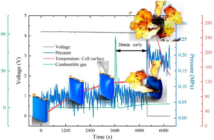Scientists generally accepted Joseph Fourier’s 1824 assertion that “earth’s atmosphere functioned as an insulator” creating a greenhouse effect. However, they did not understand the physical process behind this until 1861. That year John Tyndall discovered that water vapor and certain other gases create the greenhouse effect.
How John Tyndall Discovered the Role of Water Vapor

John Tyndall, born 1820 began his career as a surveyor planning routes for railways in England. He moved to Germany in 1848 to learn about experimental chemistry and physics. Because English universities were only interested in classics and mathematics at the time.
Germany was far ahead in research and this was where he wanted to be. By the time Tyndall returned to England in 1851, he was knowledge leader in his field. Towards the end of the decade, he shifted his interest away from magnetism and diamagnetic polarity. While these had previously occupied him, he decided to study the action of radiant energy on the constituents of the air instead.

He discovered that various gases in the atmosphere were able to absorb this heat. Moreover, water vapor was the strongest absorber, and hence the principal gas controlling air temperature. He wrote “This aqueous vapor is a blanket more necessary to the vegetable life of England, than clothing to man.”
John Tyndall became a passionate mountain climber, and an early conqueror of the Matterhorn. From there, he was a little closer to the atmosphere over which he pondered, and the glaciers, his constant source of fascination.
John Tyndall’s Youthful Audience of Fans
John Tyndall was a schoolteacher at the beginning and end of his career. He wrote, and illustrated several books including his Forms of Water Tutorial “for a youthful audience”. At the end of it, he concludes, “Here, my friend, our labors close. It has been a true pleasure to me to have you at my side for so long.
“Here and there I have stretched an arm and helped you to a ledge. But the work of climbing has been almost exclusively your own. Here then we part. Should we not meet again the memory of these days will still unite us. Give me your hand. Goodbye.”
Related
Climate Change History – In the Beginning
Climate Change Part 2 Greenhouse Effect
Preview Image: Michael Faraday, Thomas Henry Huxley, Charles Wheatstone, David Brewster, John Tyndall




